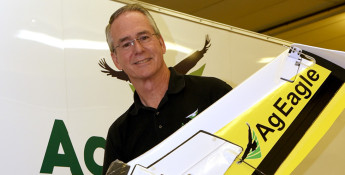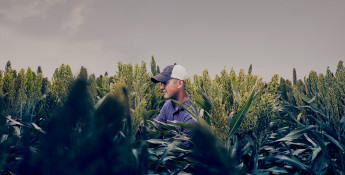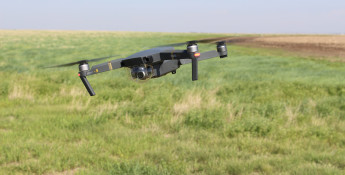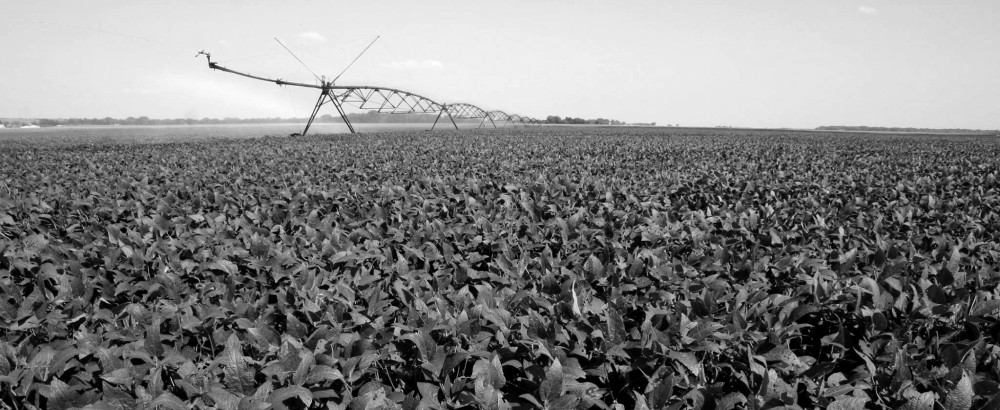By Greg Doering on May 8, 2025
Drone Technology Takes Agriculture to New Heights
Future of crop protection being tested in skies over Kansas

One day in the near future multiple crop management decisions will be driven from the top down, literally. Unmanned aircraft are already being used to monitor crop health, pull field samples and check on livestock, in addition to applying pesticides to keep crops healthy. These spray drones are quickly changing how farmers think about managing and protecting their crops.
With precision targeting, these drones can reduce chemical waste, minimize soil damage and help growers reach difficult terrain that traditional equipment can’t. In an era of rising labor shortages and increasing environmental concerns, drones offer a smarter, more efficient way to safeguard crops and people while maximizing yields. But as with any new technology, there are physical and regulatory limits on how effective drones are and just how quickly they’ll change the agricultural industry.
HOME ON THE TEST RANGE
Kansas will play a central role in overcoming the technical and regulatory roadblocks to drones doing more in the skies over open range. Last summer, Seneca-based Heinen Brothers Agra Services, which provides traditional aerial application services, received approval from the Federal Aviation Administration (FAA) for its subsidiary, Kelly Hills Unmanned Systems, for an ag drone test range. The designation covers 49,000 square miles of unrestricted, controlled airspace over Kansas, Missouri, Iowa and Nebraska.
“If you want to operate in the United States, we want to help you,” says Lukas Koch, the chief technology officer for Heinen Brothers and CEO of Kelly Hills. “We’re hoping to take that technology and knowhow and get it into agriculture. We help drone companies commercialize.”
The test range is key to the commercialization process for various drone types ranging from fixed-wing aircraft to multirotor systems, and it offers access to a variety of different crops grown in the Midwest, including corn, soybeans, wheat and milo.
Koch, who grew up on a farm near Centralia, describes commercialization as a stair-step process, starting with research and development on the range where the technology can be tested on real fields to demonstrate safety, effectiveness and durability.
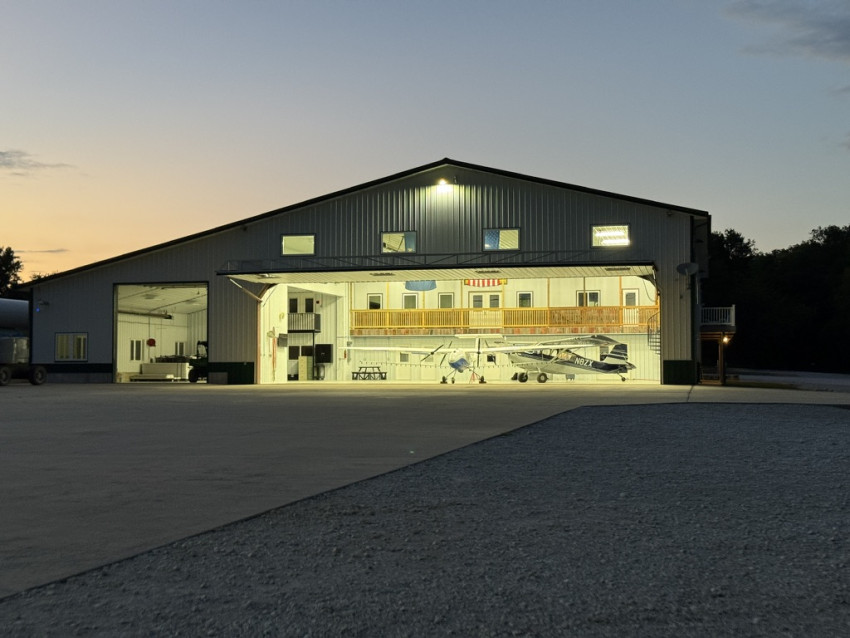
This proving process also allows drone manufacturers to receive the advance approvals and waivers necessary to exceed weight limits, fly at night or fully autonomously. The range is crucial to prove larger drones with heavier payloads can safely fly longer distances, with the ultimate goal of showing such flights can happen without a human observer.
“You can look at drafts and models all day long, but eventually you’ve got to put it in the air to see if it’s going to work — to see if the machine is capable of operating safely,” Koch says. “It’s an exciting time and there’s a lot of buzz around it. What we’re doing is pushing the envelope.”
SPRAY SCIENCE
Crop fields and rangeland face seemingly unending threats from weeds, insects, fungus and other pests that can be reduced or eliminated by applying an herbicide, insecticide or fungicide, all of which are forms of pesticides.
Pesticides and synthetic fertilizers have increased crop yields, boosted global food security, increased economic stability for growers while reducing the amount of manual labor.
Liquid applications of both are typically delivered by a sprayer pulled behind a tractor or the high-clearance ground rigs that have tall, thin tires to navigate over towering cornstalks. Aerial applications have traditionally been performed by airplanes and helicopters. There are pros and cons to each.
Aerial applications from a plane or helicopter are both fast and don’t cause damage to crops or soil, especially when the ground is wet. But pilot safety limits the effectiveness on field corners and in areas with trees or other obstructions like electric transmission lines.
Ground-based sprayers can offer more precise application and lower risk of drift. Whichever method is used, timing is a crucial element in how effectively an application will protect crops.
Technology, according to Koch, is the key to driving better soil, plant and human health.
“Our reliance on a chemistry-based approach is not as effective as it was,” he says. “Spot spraying is a proven method but limited by labor. When you get a drone that can fly farther and hold more it will unlock spot spraying. Then you’re saving money and using less chemical.”
Drones won’t immediately take the place of traditional aerial pesticide applications, nor will they replace ground rigs. Instead, Koch says, they will increase the amount of acres covered by “painting the corners” not touched by a plane or covering fields too small or confined for ground-based sprayers.
DRONE DEVELOPMENT
Current drones on the market cost around $50,000 and can carry 15 to 20 gallons of herbicide or pesticide, which will cover between seven to 10 acres. Current regulations would require up to three people, including an observer, the pilot and someone to swap batteries on the drone, which is more labor than traditional spay methods require.
“There’s a lot more people involved, amazingly, at the moment in a spray drone operation than there is on a per acre basis for an airplane,” Koch says. “Now what we’ve done is search for what’s bigger and better. We have some internal metrics of how big we think a drone needs to be and how long it needs to fly to get to mass adoption.”
One of those bigger drones is already inside a hangar at Heinen Brothers. California-based Pyka has built the Pelican Spray, a fixed-wing drone that resembles a shrunken Cessna. The battery-powered aircraft can cover nearly 40 acres with its 74-gallon payload while reaching a top speed of 70 mph.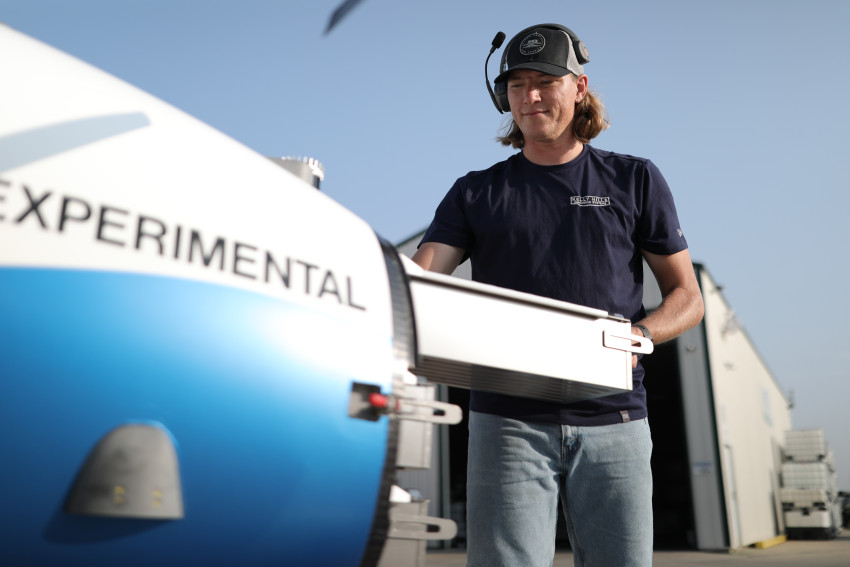 Koch believes the Pelican Spray will be commercially available in the next year, but it takes time to ensure any new system is safe and will provide a return on investment. That’s especially true in agriculture where the feedback cycle on what works and what doesn’t is longer than consumer-oriented products.
Koch believes the Pelican Spray will be commercially available in the next year, but it takes time to ensure any new system is safe and will provide a return on investment. That’s especially true in agriculture where the feedback cycle on what works and what doesn’t is longer than consumer-oriented products.
“Agriculture is different,” Koch says. “We work in seasons, almost full-year cycles. Understanding that is very useful.”
The push for bigger and better drones is the same as what’s driven the increase in size for other farm machinery— saving time and labor.
“All of these things you can control a little more when you’re doing it yourself, but seven and a half acres at a time takes a long time to cover a field,” Koch says. “In July and August when it’s hot, it’s not fun out there.”
OUT OF SIGHT
While Koch is already on the frontier of sprayer technology, he’s also keeping an eye on the horizon where he sees drones operating with much less or even zero human intervention.
“One thing we’re very interested in helping solve is beyond line-of-sight flight,” he says. “It’s imperative we figure that out for the safety of our pilots and for the safety of everybody’s investments and the assets they have in the air.”
There are also significant ground obstacles to avoid ranging from trees, houses, powerlines, cell towers and more.
“Below 400 feet of elevation is where we’re operating,” Koch says. “We’re 10 feet off the canopy — the only thing that used to get into that airspace was general aviation. It’s going to take a culmination of multiple sensors, redundant systems and some type of surveillance.”
Overcoming the obstacles to make fully autonomous spray drones a reality will create new ways for farmers and ranchers to oversee their land.
“It will create better opportunities to manage things differently and be more self-sufficient on a smaller acreage,” Koch says.
DELIVERY ON DEMAND
Drones won’t only change how crop protection is handled, they will also rewrite the playbook for how almost everything is delivered. The same technology that will allow an autonomous drone to spray a cornfield when the conditions are just right can also send a new belt from the parts store directly to the field. Everything — groceries, clothing, medicine, even this magazine — could be available for delivery on demand.
Just like aerial or ground spray applications, there’s pros and cons to this emerging technology. Roads will become less congested under such a scenario, but in turn the skies above our homes could be humming with drones flitting back and forth delivering packages.
Ensuring everything arrives at its intended destination on time and safely is a challenge that will in some ways be solved in the skies over Kansas.
To learn more about Heinen Brothers Agri Services, visit heinenbrosag.com.
YOU MAY ALSO ENJOY:

